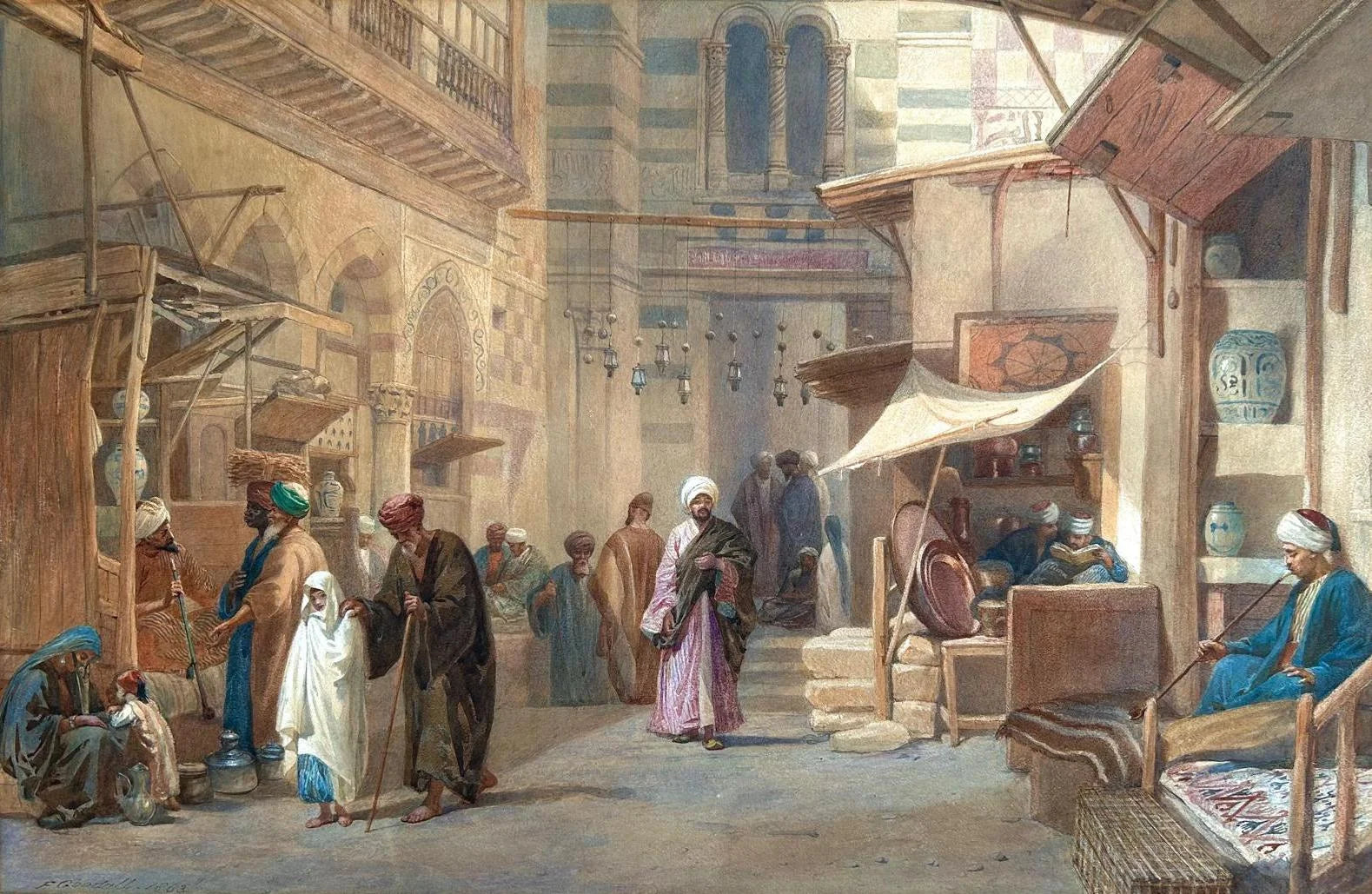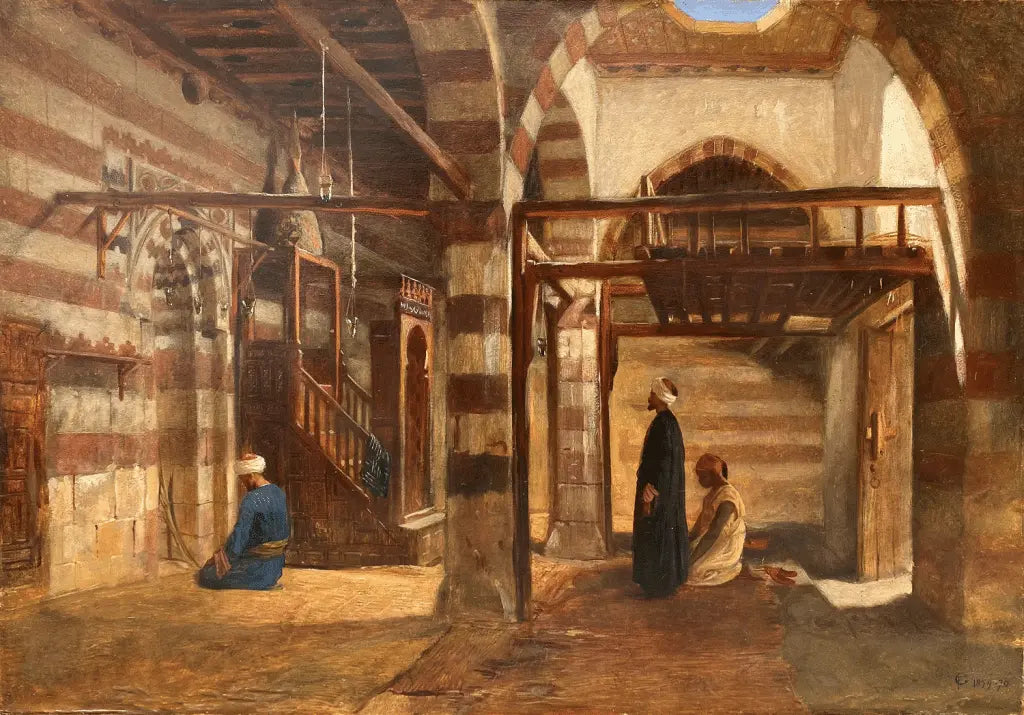Frederick Goodall

Goodall was born in London in 1822 as the son of a steel line engraver who had crucial connections with acclaimed artists such as Turner, Ruskin, Pugin and David Roberts. He was educated at the Wellington Road Academy, before leaving school to learn oil painting with his father at St Martin’s Lane Academy. At the age of 14, he was commissioned to produce watercolours of Willesden Church and Lambeth Palace, with the final products being exhibited at the Society of Artists. By sheer chance, Goodall caught the attention of Isambard Brunel, who commissioned him to produce six watercolours of the Thames Tunnel.
Four of the watercolours were exhibited at the Royal Academy, marking the beginning of Goodall’s long tenure as an exhibitor at the Academy. Between 1838 and 1859, Goodall exhibited at the Academy 27 times and won a silver medal with his first oil painting. In 1852, he was elected as an Associate and received his full Academician status in 1863. His early works focused on historical subjects, but this was to change when he visited the Middle East.
Goodall visited Egypt in 1858 and 1870, travelling alongside Bedouin tribesmen. In 1858, he was accompanied by fellow arist Carl Haag - the two often sketched together, particularly in Cairo. In 1870, Goodall stayed in Saqqara and focused specifically on sketching Bedouin traditions and culture. Upon his return to England, Goodall painted many Orientalist works inspired by his sketches - 170 of these paintings were exhibited at the Royal Academy, to great success. With the backing of key Orientalist artists Edwin Landseer and David Roberts, Goodall began to gain a reputation as a master of Oriental scenes. He attracted the attention of art dealer Ernest Gambart, who began to sell Goodall’s sketches and paintings for great prices.
Despite this success, Goodall’s income began to dwindle as he aged and the tastes of the art market changed. He was still exhibiting at the Royal Academy two years before his passing as well as at the 1900 Exposition Universelle in Paris, but was nonetheless bankrupt when he died in 1904. Goodall is buried in Highgate Cemetery, in a family vault.
